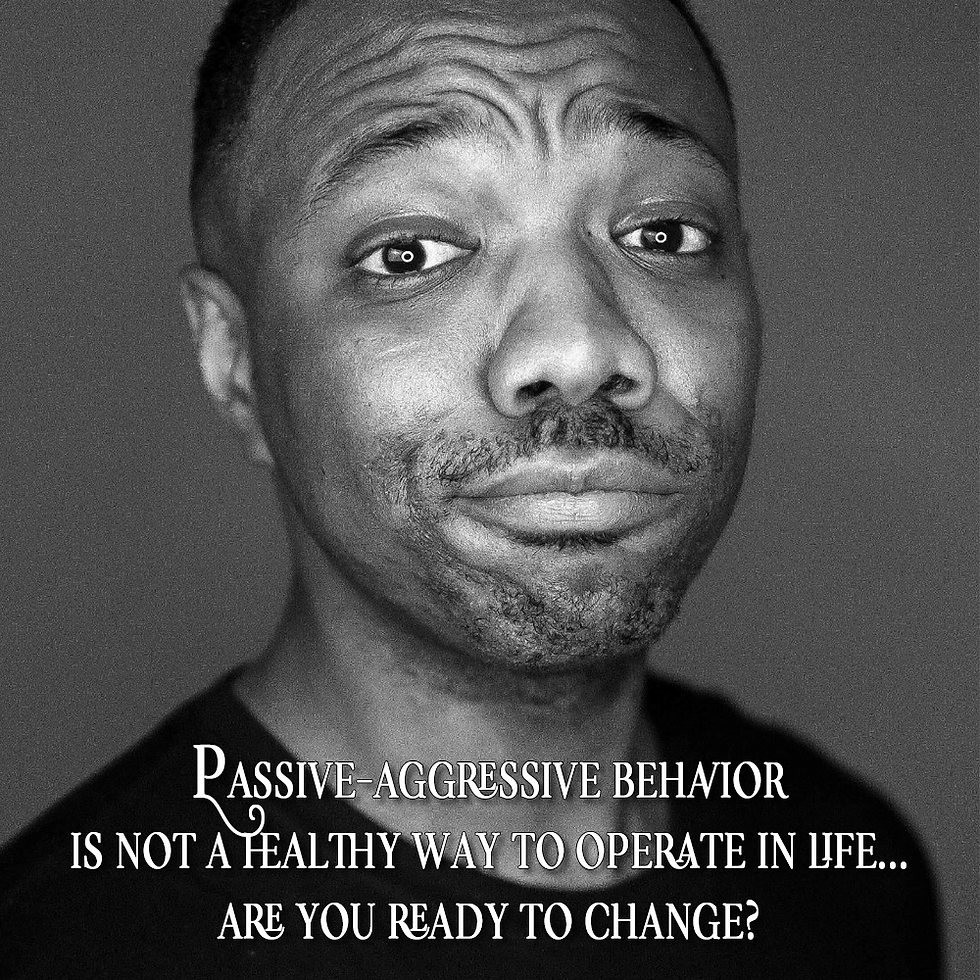Are You Passive, Passive-Aggressive, Aggressive, or Assertive?
- Joe
- Nov 10, 2022
- 4 min read
Updated: Nov 21, 2022

The ability to communicate is one of life’s skills. Our choice of words, tone, and how we express the things we want to say all reflect our distinct communication style. All of us have different communication styles, and we all have a consistent communication style that is unique to us.
This is why it is natural to talk to other people and find we disagree with what they say sometimes. It is also common to enter into conflict with another person because of a communication gap.
There are four main communication styles. They are passive, passive-aggressive, aggressive, or assertive. The style by which we communicate predominantly is also linked to how we relate and deal with conflict.
To get the most understanding out of our own unique communication style, understanding the four different communication styles is important. So which one are you?
Passive Communicators
Passive communicators are people who put the needs of others before their own. This communication style is defined by a lack of personal opinions, silences, and assumptions.
Passive communicators are afraid to disrupt the status quo, so they prefer to sit on the sidelines and watch. They are used to putting everybody’s feelings and needs first before their own. They tend to be peaceful, apologetic, hesitant, and quiet. They are often negative towards themselves and dismissive of their own thoughts and opinions.
Having a passive communication style often means that the person lives to please others, in the hope of being liked or accepted. They do not always say what they really mean or mean what they say. Rarely are they able to communicate truthfully as they overthink what people might think of them before they are prepared to share their own opinion.
Being passive means surrendering your own power and constantly allowing others to decide the outcome of various situations. It is never speaking up even when you feel wronged. This type of self-expression generally comes with feelings of low self-worth.
Passive-Aggressive Communicators
These people are the type of people who may appear to be passive on the surface, but their anger or disappointment with another person or situation brings out their passive-assertive behaviors.
They are more subtle in their approach, compared to an actively aggressive person. For example, they won’t scream and yell, instead they will give you the silent treatment and let you know subtly that they are the ones that are right, or let down or put upon.
They like to be in control and use particular tactics to get their own way. They don’t adequately or appropriately consider other people’s feelings. They will do things so they don’t look bad, and you may question at times if the blame is all yours.
A passive-aggressive communicator may give backhanded compliments, use sarcasm or avoid talking to you at all. This type of communication not only hurts, but it can also irreparably damage their relationships.
Aggressive Communicators
Aggressive communication is characterized by excessive use of power and unfiltered freedom of expression, to a point where they can potentially violate the rights of others. Aggressive communicators have the ability to attack people and ignore others' opinions, rights, or feelings, in favor of their own. They lack objectivity.
They do not necessarily feel a need to validate their claims but will fight and attack others to prove themselves right. They have little to no regard for another person’s value. Their main intention is to win the argument and never back down.
Aggressive people may get mistaken for being assertive, but these two qualities are very different. Aggressive communicators can be very demanding and abrasive and tend to be disrespectful toward others. They do not inspire a positive response but usually incite either an equally aggressive (counter-attack) or passive (submission) communication style in others.
Assertive Communicators
In between being a passive communicator and an aggressive communicator lies an assertive communication style. Assertive communicators stand up for what they think is right, expressing honest thoughts and opinions, but with calmness in their tone while maintaining respect for all opinions.
Assertive communicators manage to voice their opinions and thoughts while respecting the dignity and rights of others. An assertive individual can still be direct and honest, and will not usually come across as being offensive or insulting.
There is tact, dignity, and respect in an assertive communicator’s manner of expression.
Even if they may be right, they try to avoid disrespecting the other person’s opinion, unless they feel attacked or if the person is trying to put them down. Then they will be more assertive in their responses. They feel secure and have the humility to accept if they are wrong and apologize as necessary.
In Summary
So which one are you? Assertive communicators are the most attractive type because of the natural confidence they exude. They are not afraid to express their thoughts and opinions, and they don’t try to hurt anyone when they do. As a result, they tend to be more successful and happy.
Another quality trait of assertive communicators is that they appreciate others and praise them when it is deserved. They are the people who typically get things done, are happy to do it, and still manage to please people effortlessly. Many leaders possess this type of communication style.
Disclaimer: CoseyHealth is an affiliate of many online services and products. Links on this website may be affiliate links and I may earn a commission for purchases that are made by visitors to the Site. This comes at no additional cost to you and our goal is to provide best reviews and recommendations.



.png)
.png)

.png)






Comments